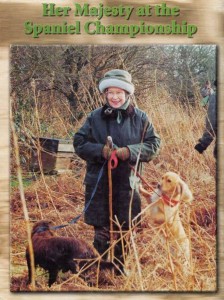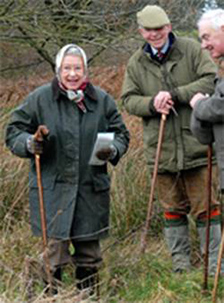The Big M, Memories with Diversions
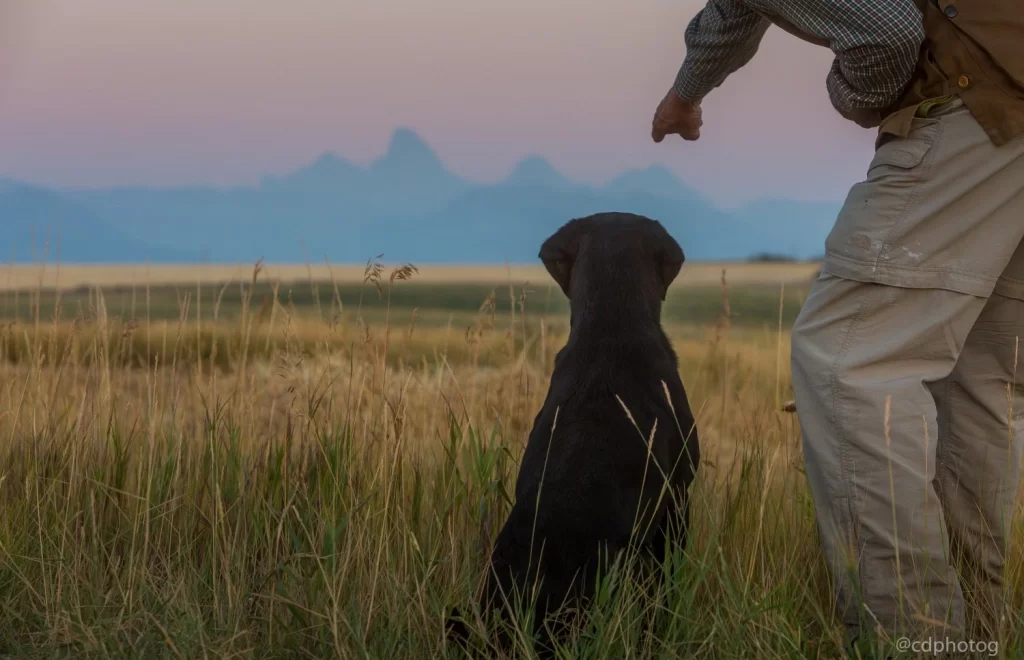
There are many Wildrose training setups designed to improve a hunting retriever’s performance afield, whether it be for waterfowl or upland game recovery. Each of these lessons are derived from actual hunting experiences. Realistic training for realistic hunting situations…as we are fond of saying, “We train as we will play.”
The Big M is exactly such a training challenge. As always, we get it right on land then transfer the skill to the water.
The Scenario:
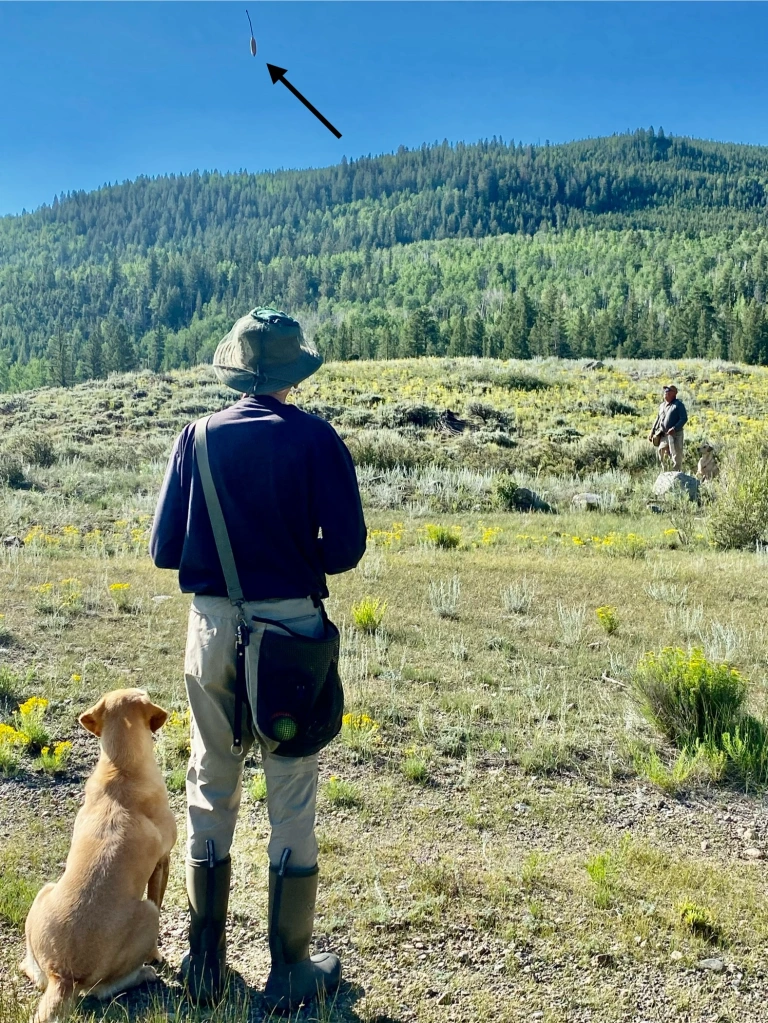 On a productive waterfowl hunt, several birds come in together. As they make their pass close to the hunters, several birds are taken at once, some fall close to our hide while a few become “sailers” dropping some distance from the closer falls, decoys and our retriever’s position. It’s a classic long bird/short bird situation.
On a productive waterfowl hunt, several birds come in together. As they make their pass close to the hunters, several birds are taken at once, some fall close to our hide while a few become “sailers” dropping some distance from the closer falls, decoys and our retriever’s position. It’s a classic long bird/short bird situation.
Our retriever’s job is to recover birds that otherwise could be lost. Normally, those will be the longer falls often unseen by the retriever. But then there are those closer birds which are the obvious targets of our enthusiastic dog. We need to recover those longer birds first, but our retriever may well have another opinion, attracted to the closer birds. This is the very circumstance Wildrose developed the Big M exercise to address. Our retriever should disregard the shorter marks and go for the longer memories or unseens. The Wildrose Rules for Recovery: Pick the longest birds first and the closer birds last. Let’s take a look at the training setup for the Big M.
The Concept
- Long bird memories. Shorter bird marks.
- With the dog at heel, place two scented bumpers as a long circle memory.
- A helper will throw two marks wide to the outside of each line to the memories. These will be denials.
- The two memories will be picked in the order of placement.
- Our retriever is to ignore the outside marks and successfully make the picks lining directly as possible, out and back.
The Setup
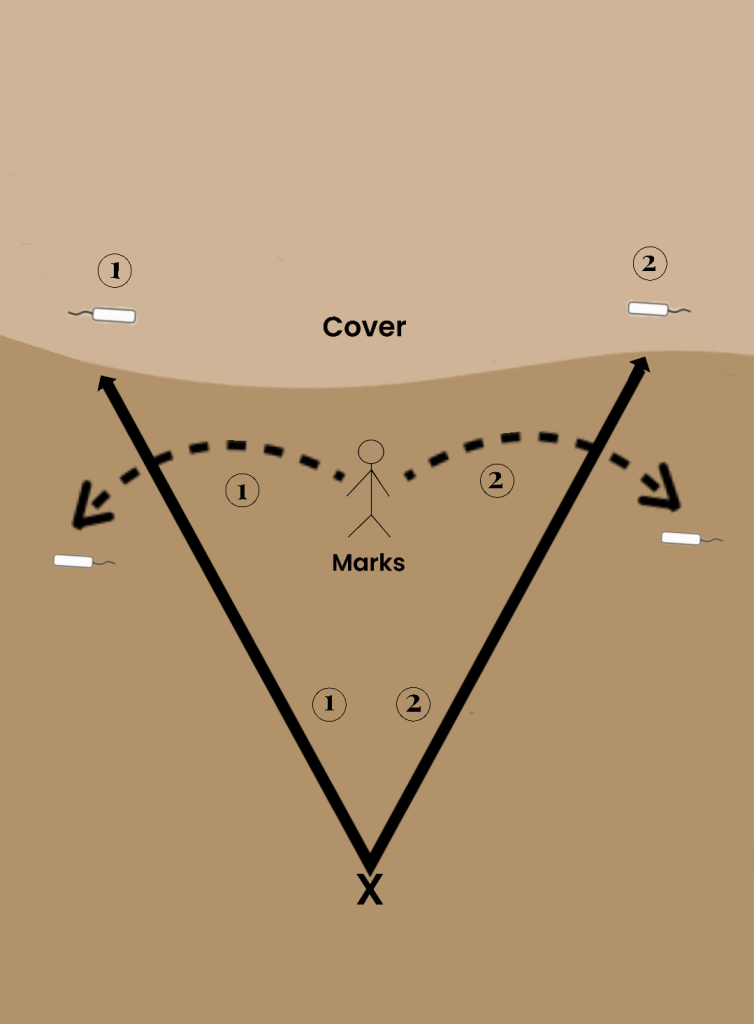 For our initial attempts, it’s best to use open ground, short grass or plowed land which offers a slight slope upward the double memory, away from our starting position. The lines will extend to the memories which will be placed at the edge of some type of cover: grass, brush, dense tree line. We now have a slight uphill slope from our point of origin to the placed memories just inside the cover.
For our initial attempts, it’s best to use open ground, short grass or plowed land which offers a slight slope upward the double memory, away from our starting position. The lines will extend to the memories which will be placed at the edge of some type of cover: grass, brush, dense tree line. We now have a slight uphill slope from our point of origin to the placed memories just inside the cover.
From the starting point, we will call X, create a circle memory by placing two scented bumpers as the dog walks along watching the placement. This is a 35 x 45-degree double. Return to X, center of the bumper placements, establishing a long line to the double memories.
A helper stands between the two lines that will be run to recover the memories, about ¾ the distance away from X and the doubles.
The assistant throws two marks high over each line – left and right – ensuring each mark falls to the outside of the proposed line from X to bumper 1 and bumper 2.
We now have established a “Big M,” two high marks as diversions to the two memories that are to be recovered.
As our bird thrower remains still, line the dog to pick the memories in order of placement. Be prepared to make a quick whistle adjustment if the dog deviates from the line attracted to the diversions.
This is a lining drill. Try to be successful without handling to the bumpers. If the dog deviates, stop, recall and reset with a primary reset (See page 164, Sporting Dogs and Retriever Training, the Wildrose Way.) If necessary, move forward from position X to shorten the line a few yards which also widens the angle away from the diversion a bit.
Once both bumpers are recovered, pick up the “M” diversions by hand as the dog watches. Never give the dog the diversions as retrieves in training.
Once successful, run the drill only once each day. Don’t train to the point of boredom.
Transferal
To entrench the skills in the students to the point of predictability, it’s “repetition with consistency without boredom.” The concept must be run/experienced successfully 5 times in 5 different locations before we can assume predictability in performance.
- Reverse the memory placement and run to success at the same location.
- Preplace the bumpers in the “known” location without the dog present. Run the concept again as permanent unseens. The dog knows the “place,” but didn’t see the bumpers put out.
- Move the location and run the setups again. Different terrain, different cover.
- Move once again to a new land location and set up the challenge this time as a cold unseen. Bumpers are blinds, not memories.
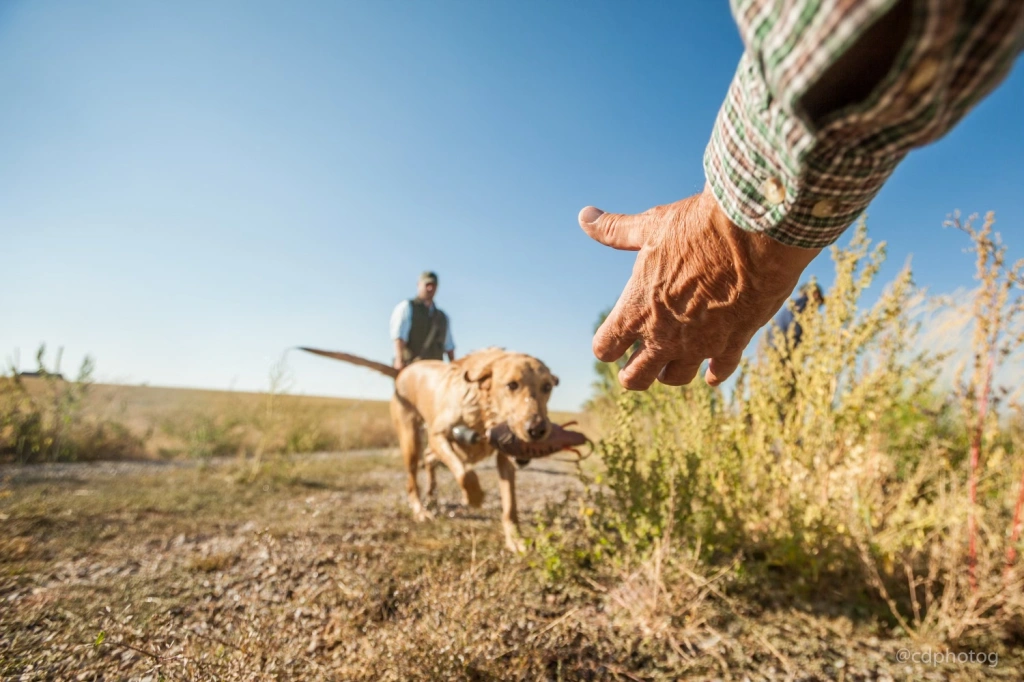
Water Work
Once the “Big M” is right on land, it’s time to get it right on water. This requires a bit of easy modification.
Set up a double memory across the water. Place the two memory bumpers on the bank or grass cover along a water’s edge. The cover is to help prevent movement of the bumpers. Complete the circle memory establishing X at the center of the bumpers’ alignment across the pond, channel or creek. Two thrown marks will fall outside each line as diversions landing in the water about halfway to the memories.
The set-up will require two assistants, one wide on each side of the handler/retriever’s position at X. One of the assistants throws a mark high over both lines (direction of travel) to the bumpers. The marks splash down to the outside of both lines. Next, assistant 2 throws from the opposite side of the handler’s position. The mark sails over both lines to the memories and lands wide in the water.
Our retriever must then ignore both marks to complete the double memory recoveries across the water. Once successful, other dogs are allowed to pick short memories, but not our primary retriever. These water marks are denials.
Finally, as we change locations for variety, add in decoys, spinners, working from a water stand, etc. After complexity, add distractions (see: The Stimulus Package, page 143, Sporting Dogs and Retriever Training, The Wildrose Way). In other words, inject a bit of realism – what might be experienced on the hunt.
The “Big M” offers a retriever a chance to improve concentration on what matters most, ignoring short marks opting to recover those longer, more difficult birds first.
And therein lies the real talent of an effective game dog – Bring back birds that could otherwise be lost.
Train as you will play!


